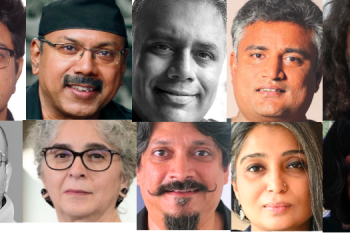Bengaluru: Products that cater to the consumer need for convenience while adapting to the homebody economy dominated the festive sale period in India (Oct. 15 – Nov. 13, 2020), according to global measurement company, Nielsen.
With the need for communication and increased media consumption, mobile phones and accessories (e.g. earphones, headsets, case covers, etc.) continued to account for over half of e-commerce sales during the festive period. While notably, electronics (e.g. laptops, printers, peripherals) increased its share by 10% compared to 7% during the festive season last year (Sept. 28 – Oct. 25, 2019) given the increase in remote working and schooling. See chart 1.

Nielsen India’s E-commerce Consumer Panel (E-Analytics Solution), which provides a holistic and granular view of the online shopper and helps measure consumer behavior across more than thirty E-Commerce platforms, finds double digit increase in average spend of online shoppers for electronics and accessories (39%), mobile and accessories (12%), and fashion, including apparel, footwear, and accessories (10%). Appliances (e.g.TV, WM, refrigerators, etc.) also saw notable shopper spending increase at 9%.

“Consistent with the trends that we are seeing globally, consumers in India are fitting into the homebound behaviour,” observes Kunal Gupta, Head, Consumer Intelligence, Nielsen, South Asia. “Triggered by the desire to make life and work easier and more convenient at home, we see a significant increase in shopper spend in categories that are perceived to cater to homebody needs on account of the pandemic.”
Geographically, the growth of e-commerce during the festive period is led by Bharat (<10 lakh population towns). Nielsen reports a 16% increase in orders from smaller cities (<1 lakh population towns) and a 14% rise in shopper spends from >1 lakh+ population cities. This clearly shows the evolution of the shopper spend journey through urban classes.

Vaughan Ryan, Nielsen’s Consumer Intelligence managing director in Asia shares, “Manufacturers and retailers in multiple markets such as China, Koreas and South East Asia have long recognized the affinity of consumers to online shopping during popular festivals. The behavior of waiting and saving up for the big festival online sales have clearly turned into a consumer habit. It doesn’t come as a surprise that manufacturers and traditional retailers have online sales promotions on their own or have partnered with online platforms to get products faster to more consumers.”
A fifth of orders placed are returned or cancelled – more pronounced in smaller cities
Interestingly, attractive promotions and discounts also affected the number of order cancellations online. A unique flexibility which e-commerce consumers enjoy and helps build trust towards online shopping.
Nielsen reports that every fifth order is cancelled (returned or replaced) by online shoppers, equating to an average 20% cancellation rate for total e-commerce during the festive period in 2020 which is higher than the 17% cancellation rate last year. A higher cancelation rate of 27% is seen from smaller cities (less than 10 lakh population cities or towns which is on account of shoppers who are attempting online shopping for the first time.
“The cancellaton/returns is a critical metric to track as it directly impacts the retailers GMVs since reverse logistics is an additional overhead to manage for retailers. While on one end cancellations offer flexibility to consumers on other end they also lead to poor customer satisfaction if the returns experience is broken,” adds Gupta
Strong FMCG performance during the festive sale period at the time of COVID
FMCG continues to record the highest orders during festive sales with 35% unit share. Looking at FMCG sales over the last 14 months, FMCG sales are higher during the festive period this year versus the pre-COVID period and matches the same level during Republic Day sale in January this year. See Chart 2.
New FMCG shoppers have been enticed to shop online for the first time during the festive period in 2020, and with shopper penetration remaining high at almost 20% in the festive period for the year. An uptick from 14% in 2019, indicates that more consumers were persuaded to shop online for FMCG.

“We see the gradual recovery of FMCG online from April when consumers were mostly buying essentials online and there were supply and delivery issues. The Big Day Events which usually happen during festive sales in August and October helped accelerate the recovery of FMCG,” states Gupta.
Personal care category sees a comeback
In terms of the average number of FMCG categories that online shoppers bought, Nielsen reports an average of nearly three categories, the same average recorded last year. While staples and snacking saw increased growth during COVID with 35.3% and 14% value contributions respectively, personal care significantly gained during the festive period with 54% value contribution.
“Post Lock-down in April 2020, we have been seeing staples, impulse and hygiene as consistent gainers from personal care. Festive Big Days altered this behaviour by prompting the consumers to stock up their personal care supplies. Whether this marks the comeback of Personal care (vs staples) or not, we are yet to see,” Gupta stated.

















